Few things are as en vogue in golf course architecture as the short par 4. When designed well, this type of hole provides options and variance in scoring to players of all skill levels. Great short 4s reward superb play with birdies or even eagles, but punish missteps with double bogeys or worse. Following Hanse Golf Course Design’s restoration and renovation of Perry Maxwell’s original design, Southern Hills Country Club is once again home to one of the game’s most compelling short 4s: the 17th.
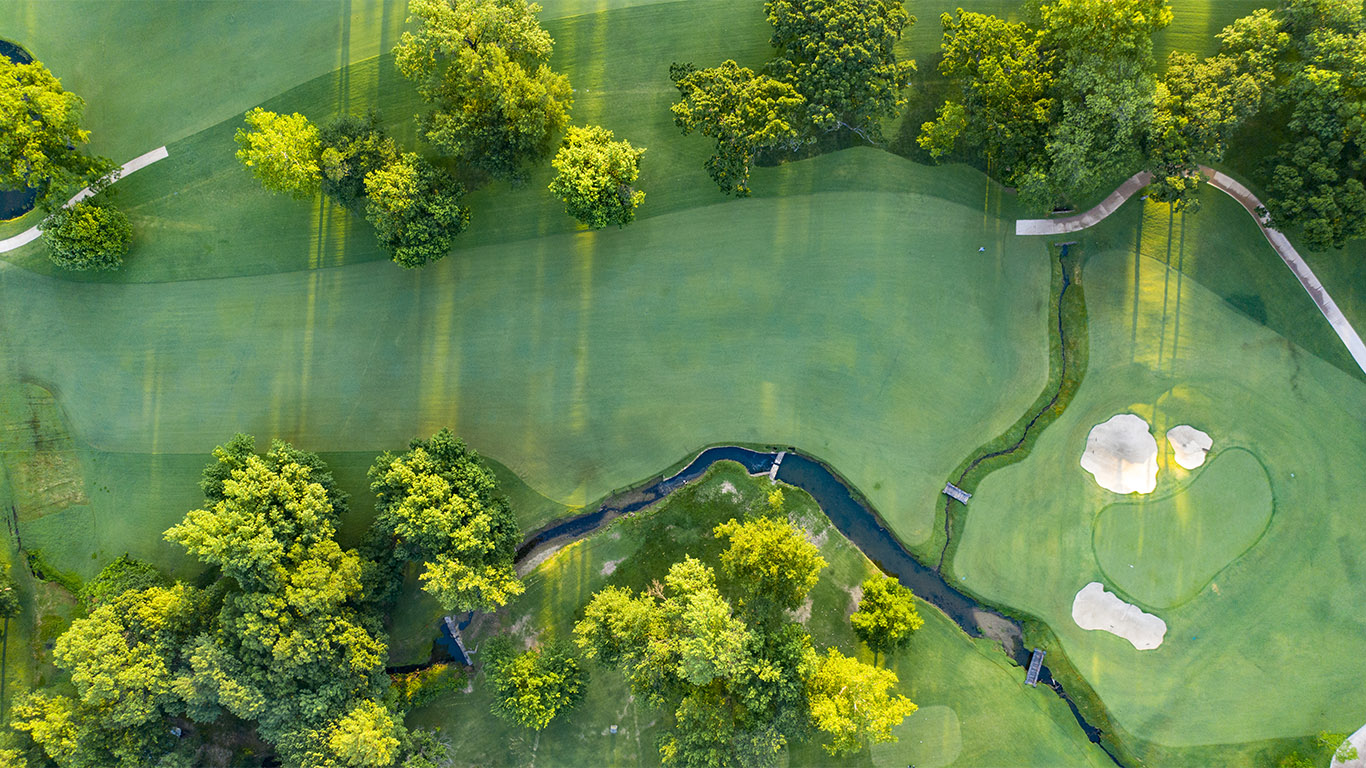
An overhead view of the 17th hole at Southern Hills
This 358-yard hole offers a scoring opportunity between the stout 16th and 18th in Southern Hills’ closing stretch. During their recent work, Gil Hanse and Jim Wagner restored No. 17’s creek, which now meanders in front of the green site. This creek—along with the shallow, wide, undulating green—are the key ingredients in this hole’s interest.
The creek and its surrounding topography make for ideal ground. For the first half of the hole, the fairway cants subtly from left to right for the first half hole. It then tumbles down to the creek bed in a series of wavy contours where there are few level lies. The higher left side of the fairway, on the other hand, is away from the creek and offers generally flat lies. Finally, the green, a shallow kidney bean, has a Maxwell roll that bisects the green into right and left halves. Guarded by two bunkers in front and one back right as well as repelling edges and short grass, the 17th leaves nervy wedge shots from all positions.
The design of the green creates two distinct situations: right pin and left pin. When the pin is on the right portion of the green, the advantage goes to those who find the left side of the fairway. From this angle, players have a level lie and contouring on the green that lends a helping hand. Only a precise right-to-left tee shot will stay on this section of the fairway, however.
-
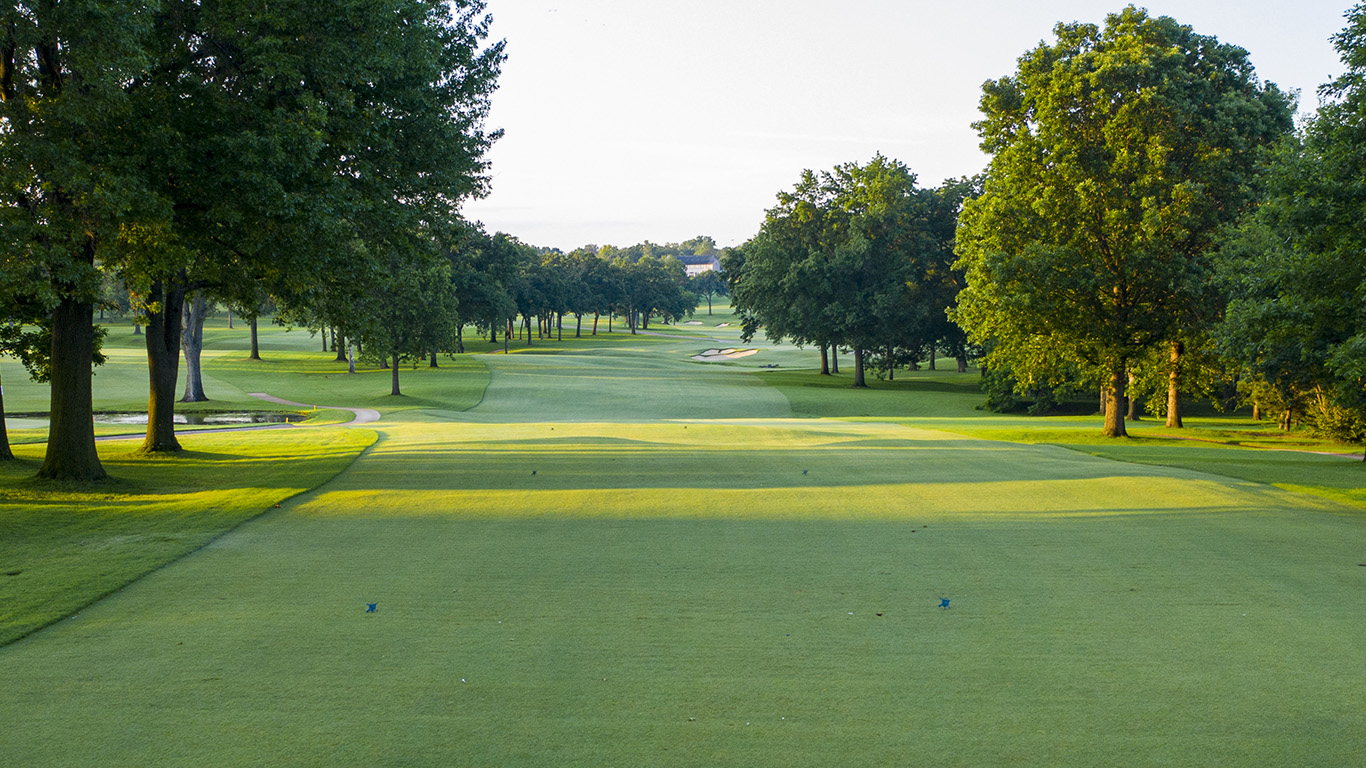
The 17th hole at Southern Hills
-
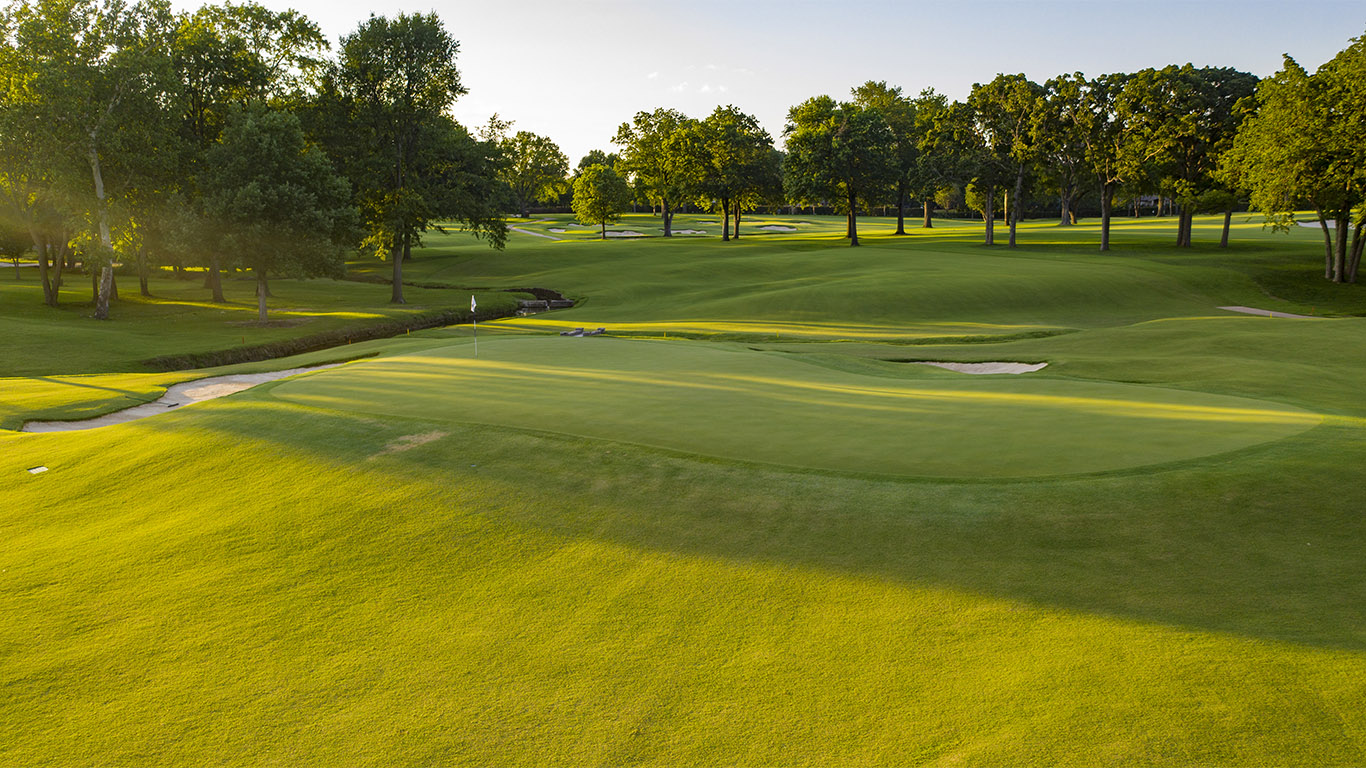
The 17th hole at Southern Hills
-
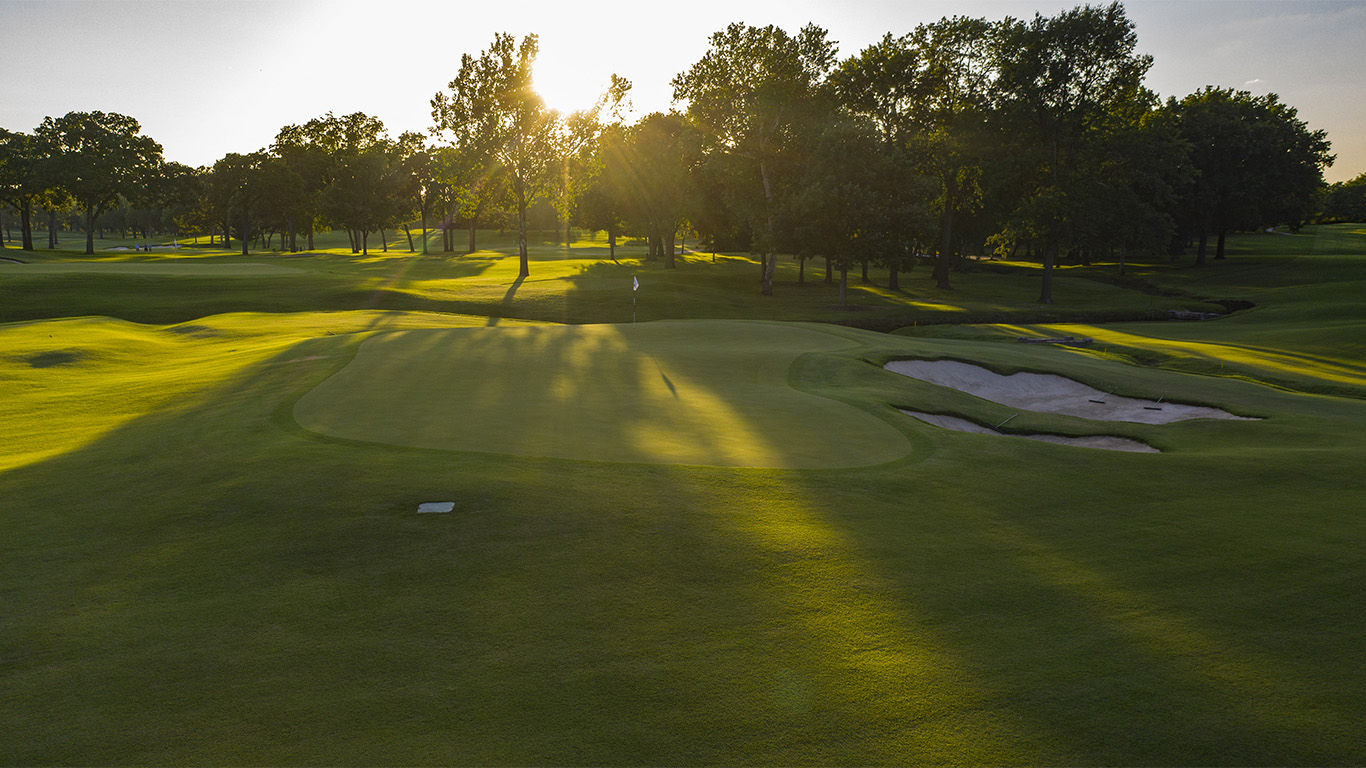
The 17th hole at Southern Hills
-
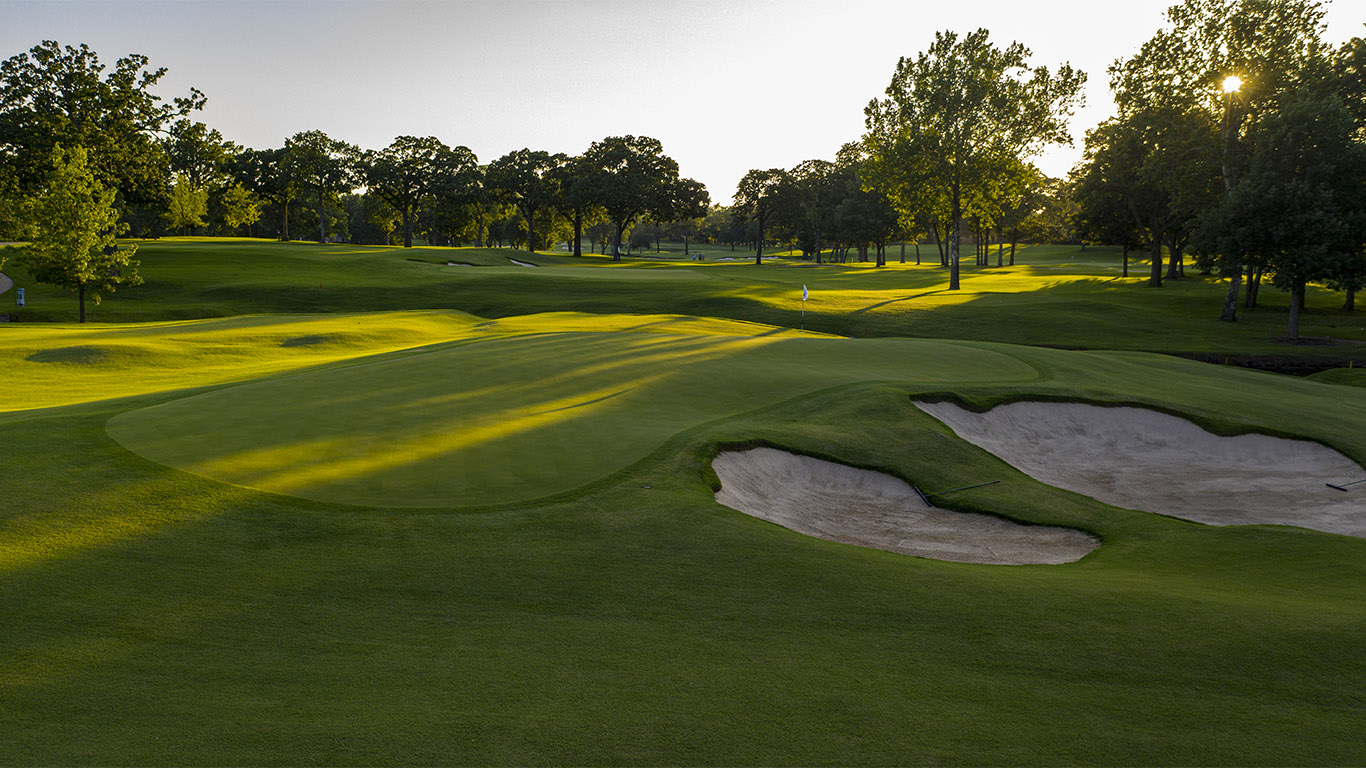
The 17th hole at Southern Hills
-
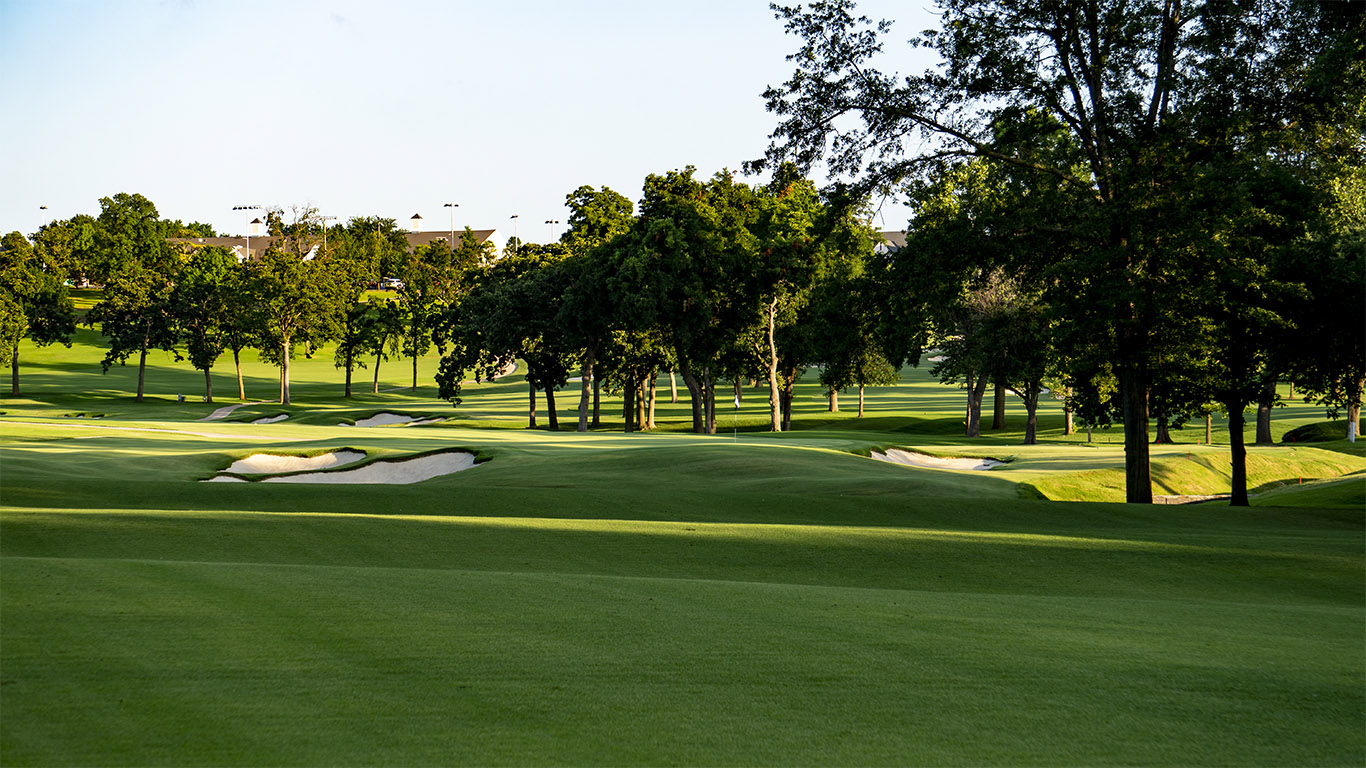
The 17th hole at Southern Hills
-
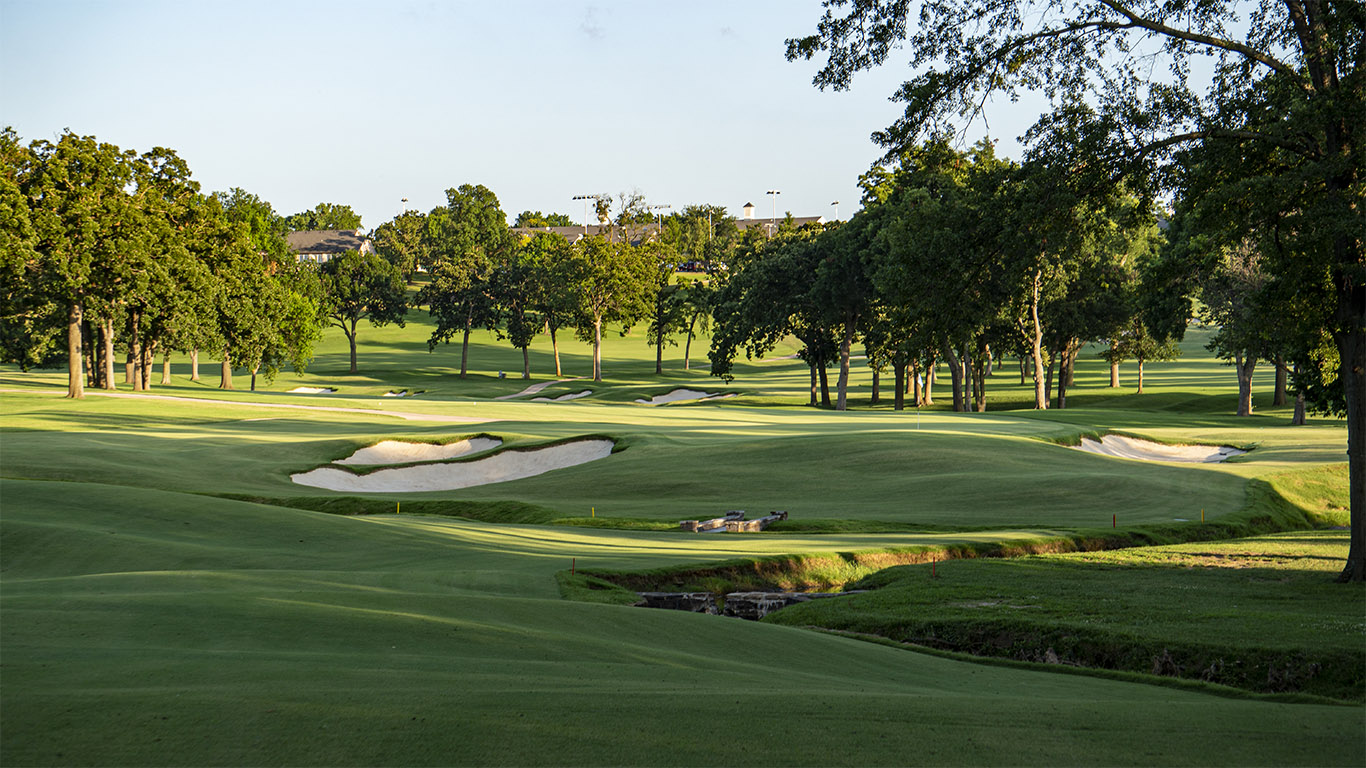
The 17th hole at Southern Hills
Those who end up down the slopes and short of the creek on the right face a challenging wedge to an uphill green, likely from an uneven lie. If the tee is up, a final option for long hitters is to pull driver and attempt to get the ball pin high or just short. These positions present a relatively simple chip to a right pin, but they are challenging to find because of the restored creek. Anything long is trouble. From there, players must have the deftest of touch in executing a chip to a green that cants away.
A left pin gives more of a green light to a driver from the tee. Less protected by bunkers and contours, this section of the putting surface yields simpler up-and-downs and even the occasional eagle to aggressive play. Still, the back-to-front tilt of the green makes any miss long a challenge. For those who lay up, the right and left sides of the fairway are more equitable. The right side still has drawbacks—unpredictable lies, an elevation well below the green—but affords the length of the green to work with. With the Maxwell roll in the middle of the green, this space is welcome. Wedge shots from the right side can land on a downslope and skip forward to the pin. But the left side isn’t bad: it will again give access to a level lie and helping contours on the green.
No. 17 at Southern Hills will be one of the most interesting and exciting holes to watch when professional golf returns to the course. The green’s orientation, shape, and contouring resemble those of the 7th at Augusta National, another Perry Maxwell creation. For those who dream about a restoration of Maxwell’s version of 7th at Augusta, the 17th at Southern Hills could provide insight into how fascinating that could be.


 by
by 
